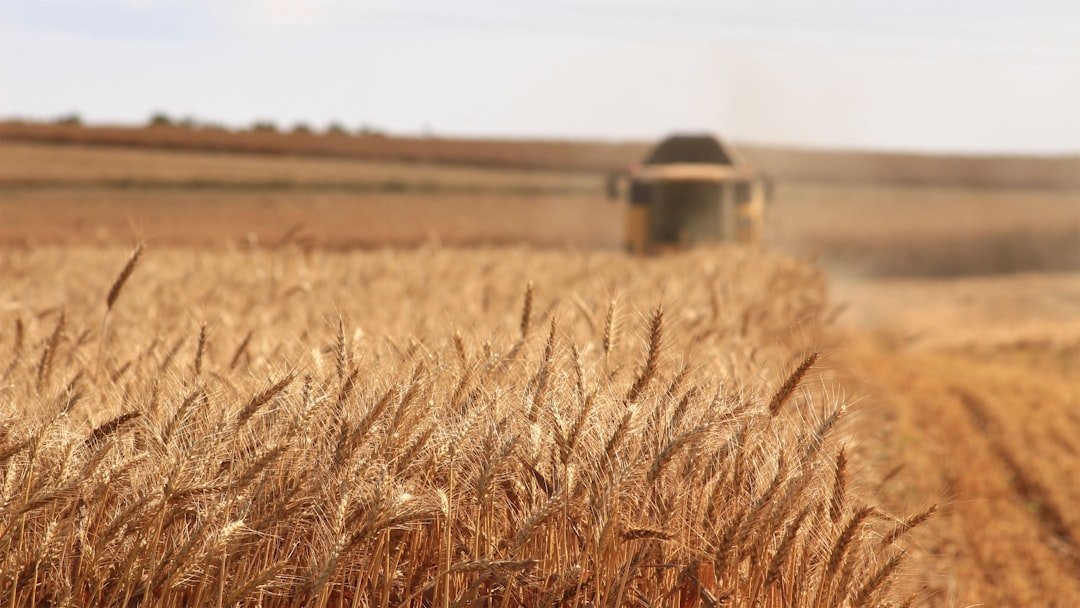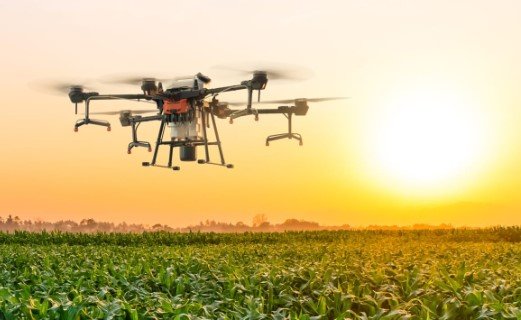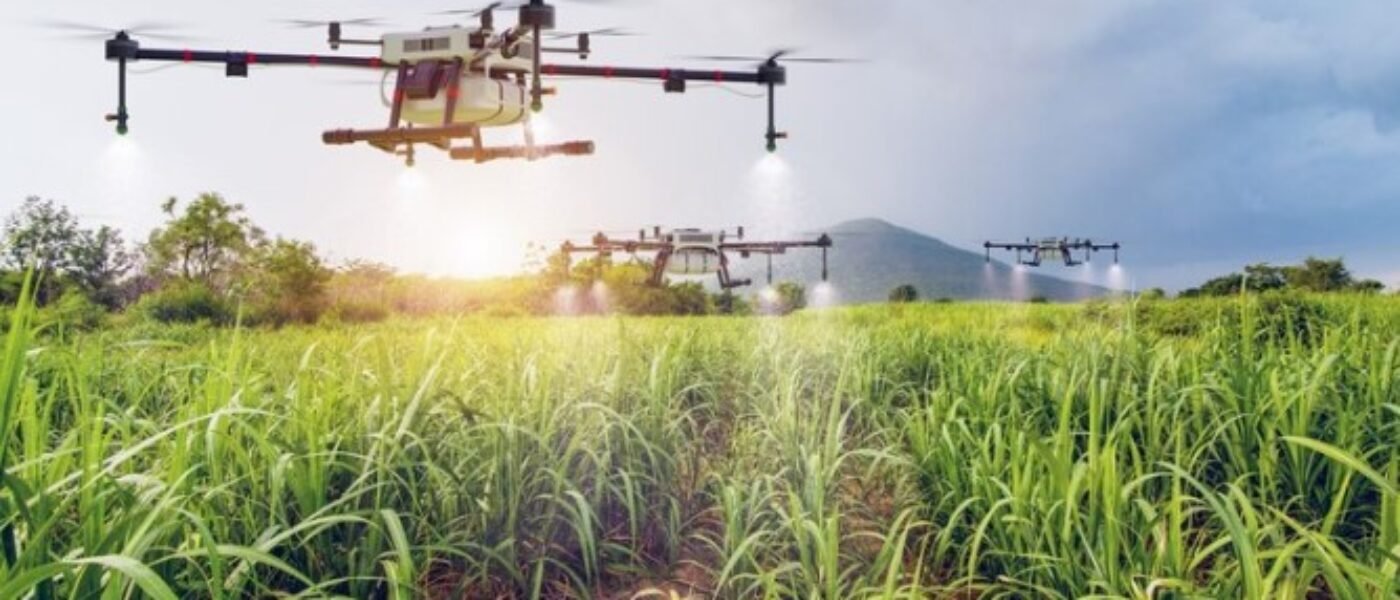Introduction
Welcome to the world of cutting-edge farming, where India’s agriculture is undergoing a technological revolution thanks to drones! These flying gadgets are not just for selfies anymore. They are ushering in a new era of precision agriculture, making farming more efficient and sustainable. With the role of drones in precision farming, farmers can monitor crops, analyze soil, and even sow seeds with pinpoint accuracy. Let’s explore how this incredible technology is changing the face of Indian farming technology and paving the way for a brighter agricultural future.
The Role of Drones in Precision Agriculture
 Image courtesy: Unsplash
Image courtesy: Unsplash
As we delve into the fantastic world of precision agriculture in India, drones are quickly becoming the unsung heroes. They offer eye-in-the-sky capabilities that are transforming traditional farming methods into high-tech operations. Let’s look at how these marvels of technology are reshaping Indian agriculture.
Enhancing Crop Monitoring and Management
Crop monitoring has never been as comprehensive or as straightforward as it is now, thanks to drones. Farmers can now obtain a bird’s-eye view of their fields, allowing them to monitor crop health, identify pest infestations, and detect nutrient deficiencies. With drones, detailed and timely data collection becomes feasible:
– Rapid Detection: Drones provide quick scans of vast fields, detecting problems in real-time or near-real-time, helping farmers act swiftly to reduce losses.
– Precise Data: These devices capture multispectral images that help in assessing plant health perspectives that are invisible to the naked eye.
– Customized Planning: Farmers can utilize drone-generated data to create specific action plans tailored to different sections of their fields, optimizing yields with precision.
With these advantages, farmers across India are better equipped to monitor their crops diligently and maximize their productivity more than ever before.
Improving Irrigation Practices
Water scarcity is a persistent issue in many agricultural regions, but drones are stepping up to provide better irrigation solutions. By using drones, irrigation becomes much more than just pouring water—it’s about delivering it strategically:
– Hydration Mapping: Drones can create accurate maps of moisture distribution across fields, ensuring that every corner is sufficiently watered.
– Efficiency Gains: With insight into precise water needs, farmers can reduce wastage, ensuring that water is used intelligently to maintain healthy growth.
– Timely Adjustments: Real-time data means farmers can adjust irrigation patterns based on weather forecasts, ensuring crops are neither over-watered during the rainy season nor parched during droughts.
When every drop of water counts, drones help make each drop more impactful.
Facilitating Accurate Soil Analysis
Understanding soil conditions is fundamental to successful farming, and drones are making soil analysis accurate and convenient. Traditional soil sampling can be labor-intensive and time-consuming, but drones bring automation and efficiency:
– Surface Insights: Equipped with multispectral cameras, drones analyze the surface to extract valuable data on soil composition.
– Variability Measurements: They provide detailed maps indicating soil variability, helping farmers understand where nutrients are rich and where they are lacking.
– Predictive Analytics: By integrating historical data and patterns observed via drones, farmers can predict future soil behavior and plan their crop cycles accordingly.
With drones taking the lead in soil analysis, farmers can now apply the right nutrients in the right quantities precisely when they are needed.
Drone Innovations Leading the Charge
The frontier of drone technology is rapidly advancing, introducing astonishing innovations that are spearheading the transformation in Indian agriculture.
Advanced Imaging and Sensing Capabilities
Drones equipped with cutting-edge cameras and sensors are proving invaluable in the world of agriculture. This isn’t just your average overhead snapshot—it’s a fully immersive detail-oriented observation:
– High-Resolution Imagery: Drones carry cameras capable of capturing images in visible as well as infrared spectrums, offering comprehensive crop health assessments.
– Thermal Imaging: They help in detecting subtle variations in temperature, which can indicate plant stress or irrigation issues.
– Custom Sensors: From nitrogen to phosphate levels, specialized sensors monitor specific factors, providing tailored solutions for crop health enhancement.
By seeing what the farmer’s eye can’t, drones lead to more informed decision-making.
Autonomous Flight and Data Processing
The days when drone operation required manual control are fading. Today’s drones are smart, boasting autonomy and superior data handling capabilities:
– Self-Guided Flights: With built-in GPS systems, drones can fly pre-defined routes autonomously, collecting data without constant human input.
– Data Synthesis: Drones are capable of processing and analyzing data on the fly, presenting farmers with actionable insights gathered in real-time.
– Seamless Integration: By syncing with mobile apps and cloud platforms, data is effortlessly compiled and accessed right from a smartphone or computer.
This intelligent autonomy means less time spent on operations and more time optimizing outcomes.
Integration with IoT and AI Technologies
Perhaps the most revolutionary development is the seamless blend of drones with IoT and AI technologies, driving an even greater agritech evolution:
– Smart Farming Systems: Drones communicate with IoT devices such as sensors and weather stations to create holistic, data-driven irrigation and fertilization strategies.
– AI-Driven Insights: By using AI to analyze large datasets, these innovations improve forecasting and provide precision recommendations that adapt over time.
– Predictive Maintenance: AI algorithms predict maintenance needs for agricultural machinery and even the drones themselves, minimizing downtime and maximizing efficiency.
As IoT and AI continue to make strides, the synergy with drones paves the way for a thriving future in Indian agriculture, empowering farmers like never before.
Benefits of Agri-Tech Drones for Indian Farming
The use of drones in agriculture is not just a futuristic fantasy—it’s already transforming Indian farming with some pretty amazing benefits. Let’s dive into how these flying wonders are reshaping the fields:
Boosting Crop Yields and Quality
Drones are helping Indian farmers boost crop yields and improve quality in ways that were previously unimaginable. Equipped with multispectral imaging and advanced sensors, these drones provide farmers with real-time data about their crops. Here’s how they make a difference:
– Spotting Problems Early: With drones, farmers can easily spot issues like pest infestations, water shortages, or nutrient deficiencies before they become big problems. Early detection means quicker intervention, saving crops and increasing productivity.
– Precision Farming: Drones help farmers apply water, fertilizers, and pesticides precisely where they’re needed. No more guessing! This targeted approach not only boosts crop yields but also enhances the overall quality of the harvest.
Imagine producing more with less effort—drones are making this a reality for many farmers in India.
Reducing Environmental Impact
Sustainability is key, and drones are stepping up to help reduce the environmental impact of farming. Traditional methods can sometimes harm the ecosystem, but drones bring about positive change by:
– Reducing Chemical Use: Precise application of pesticides and fertilizers means fewer chemicals are needed, which is great news for the soil and surrounding flora and fauna.
– Saving Water: Drones help monitor crop health and irrigation needs from above, allowing for better water management. This means less wasted water and more conservation of valuable resources.
Increased efficiency with minimal environmental disruption is a win for farmers and nature alike.
Strengthening Farmer Collaboration and Knowledge Sharing
In today’s connected world, information is power. Drones play a pivotal role in bringing farmers together, fostering collaboration, and sharing valuable knowledge. Here’s how:
– Data Sharing: Drone data can be shared easily with other farmers and agricultural experts. This collaborative environment helps spread successful techniques and insights across different farming communities.
– Online Platforms: With digital platforms, farmers can upload drone data and discuss crop conditions, issues, and solutions. These platforms are becoming vibrant communities where knowledge is exchanged, and support is found.
In essence, drones are not only advancing agriculture but also knitting a fabric of community among farmers across India.
Challenges and Considerations in Drone Adoption
While drones offer exciting opportunities, adopting this technology in Indian agriculture isn’t without its challenges. Let’s take a closer look at some of these hurdles:
Regulatory and Compliance Issues
Navigating the regulatory landscape can be tricky when it comes to drone usage. In India, there are specific laws and guidelines that must be followed to ensure safe and legal operations. Key challenges include:
– Obtaining Permissions: Farmers often need to acquire special permits and adhere to guidelines for flying drones, which can be a complicated process.
– Ensuring Safety: Drones must be operated within legal frameworks to ensure they do not interfere with other air traffic or violate privacy laws.
While these regulations are necessary for safety and privacy, they can sometimes slow down the adoption process for eager farmers.
Cost and Accessibility Barriers
Despite their potential, drones can pose financial and operational challenges for small and marginal farmers.
– Initial Investment: The cost of purchasing drones and related technology can be a significant barrier. Many farmers struggle to bear these upfront expenses.
– Access to Technology: In rural areas, access to technology might be limited, making it difficult for farmers to use drones effectively.
Finding ways to make drone technology more affordable and accessible is crucial to ensuring that all farmers can benefit, not just those with ample resources.
Training and Skill Development for Farmers
Introducing new technology also means that farmers need to learn how to use it effectively, which requires training and development.
– Technical Skills: Operating drones requires new technical skills that many farmers may not already have.
– Ongoing Education: As technology evolves, continuous learning and adaptation are necessary to make the most out of drone usage.
Empowering farmers through training initiatives and educational programs is vital to overcoming these obstacles and reaping the benefits of drone technology.
In conclusion, while the road to full-scale drone adoption in Indian agriculture is lined with challenges, the potential rewards are immense. By addressing these hurdles with thoughtful solutions, the future holds promise for a sustainable and productive farming industry in India, with drones at the heart of the transformation.
Future Prospects for Drones in Indian Agriculture

The future of drones in Indian agriculture looks incredibly promising. As technology advances, the potential applications are expanding rapidly. Here are some key prospects:
– Increased Accessibility: With decreasing costs and government initiatives, drones are becoming more accessible to smallholder farmers.
– Advanced Data Analytics: The integration of AI and machine learning can provide even more precise insights for crop management and yield prediction.
– Sustainable Practices: Drones can help promote eco-friendly farming by optimizing resource usage, minimizing waste, and reducing the environmental impact of agriculture.
These innovations could revolutionize Indian farming by making it smarter, more efficient, and more sustainable. As we look to the future, farmers in India stand to benefit significantly from these transformative tools.

September 10, 2025 @ 6:42 pm
I am not sure where you are getting your information, but good topic. I needs to spend some time learning much more or understanding more. Thanks for wonderful information I was looking for this information for my mission.
September 21, 2025 @ 10:40 pm
You should take part in a contest for one of the best blogs on the web. I will recommend this site!
September 24, 2025 @ 6:17 am
Today, I went to the beachfront with my children. I found a sea shell and gave it to my 4 year old daughter and said “You can hear the ocean if you put this to your ear.” She put the shell to her ear and screamed. There was a hermit crab inside and it pinched her ear. She never wants to go back! LoL I know this is completely off topic but I had to tell someone!
November 9, 2025 @ 4:44 pm
Hola! I’ve been reading your site for a long time now and finally got the bravery to go ahead and give you a shout out from Humble Tx! Just wanted to say keep up the good job!
November 10, 2025 @ 1:21 pm
I am constantly searching online for tips that can help me. Thanks!
November 12, 2025 @ 5:49 am
This is a very good tips especially to those new to blogosphere, brief and accurate information… Thanks for sharing this one. A must read article.
November 15, 2025 @ 11:26 am
Hi I am so excited I found your site, I really found you by error, while I was searching on Google for something else, Nonetheless I am here now and would just like to say thanks a lot for a incredible post and a all round thrilling blog (I also love the theme/design), I don’t have time to read it all at the minute but I have bookmarked it and also included your RSS feeds, so when I have time I will be back to read much more, Please do keep up the fantastic work.
November 30, 2025 @ 11:16 pm
I love the efforts you have put in this, thanks for all the great blog posts.